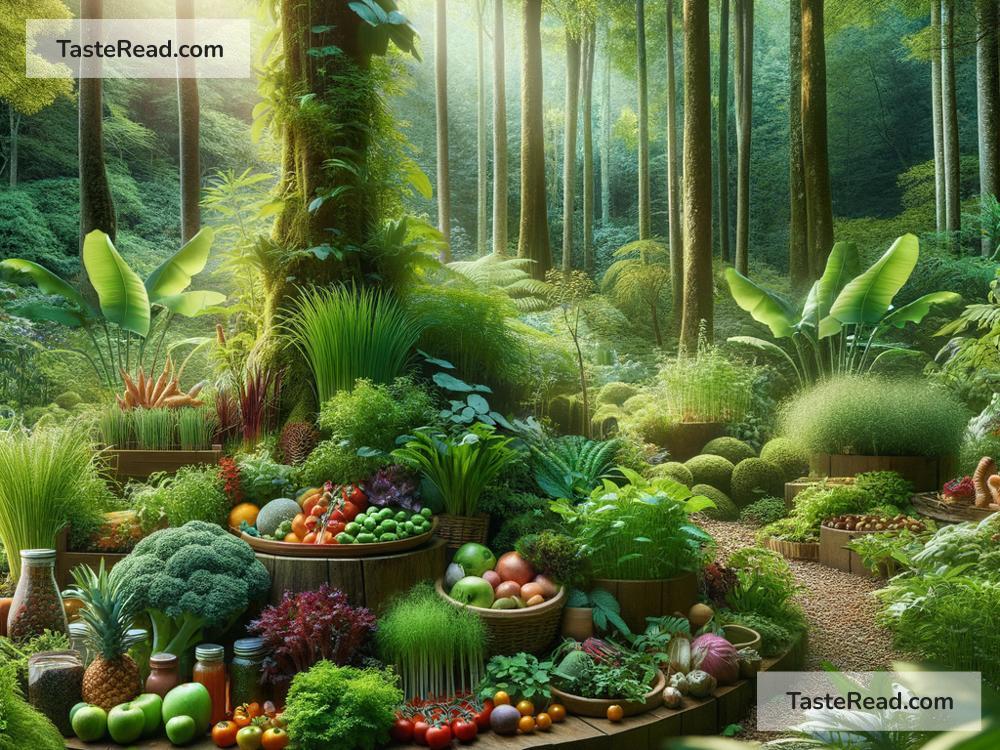Exploring the Role of Forest Gardens in Ingredient Sourcing
In today’s world, where environmental sustainability and ethical sourcing are becoming more important to consumers, businesses are looking for innovative ways to meet these demands. One such method that has been gaining traction is sourcing ingredients from forest gardens. But what are forest gardens, and why are they becoming a key player in ingredient sourcing? Let’s dive into the world of forest gardens and discover their significance.
What Are Forest Gardens?
Imagine walking through a lush forest, where fruits, nuts, herbs, and vegetables grow together in harmony. This is not your typical wild forest but a carefully designed ecosystem known as a forest garden. Forest gardens are a form of agroforestry, which combines agricultural and forestry technologies to create more diverse, productive, and sustainable land-use systems.
In a forest garden, plants are layered vertically – tall trees form the canopy, while shrubs, herbs, and vegetables grow beneath. This mimicry of a natural forest creates a self-sustaining ecosystem that requires minimal intervention to thrive. Unlike traditional farming, which often relies on a single crop (monoculture), forest gardens promote biodiversity and can provide a wide variety of produce from a relatively small area.
The Role of Forest Gardens in Ingredient Sourcing
So, how do forest gardens play into the world of ingredient sourcing? Here are some key points that highlight their growing importance:
Sustainability
One of the most significant advantages of sourcing ingredients from forest gardens is sustainability. Since forest gardens mimic natural ecosystems, they are inherently more resilient and require less input in the form of water, fertilizer, and pesticides. This not only reduces the environmental impact of farming but also ensures a consistent supply of ingredients that are less likely to be affected by climate change and soil degradation.
Biodiversity
Forest gardens are a hotspot for biodiversity. By fostering a wide variety of plant species, they provide habitats for numerous insects, birds, and other wildlife. This biodiversity is not only essential for the health of the planet but also for the health of the garden itself. A diverse ecosystem is more resilient to pests and diseases, reducing the need for chemical interventions.
Ethical Sourcing
Many forest gardens are managed by small-scale farmers and indigenous communities who have been practicing this form of agriculture for centuries. By sourcing ingredients from these gardens, businesses can support local economies and ensure that their products are ethically sourced. This not only helps preserve traditional knowledge and practices but also ensures that the benefits of commerce reach some of the most marginalized groups.
Quality Ingredients
The diverse and symbiotic nature of forest gardens often leads to higher quality ingredients. Plants grown in this setting are less stressed and can naturally reach their optimal nutritional content. Moreover, the lack of chemical inputs means that these ingredients are cleaner and healthier, catering to the growing demand for organic and natural products.
Challenges and Opportunities
Despite their benefits, integrating forest gardens into modern supply chains is not without challenges. One of the main issues is scalability. Since forest gardens often involve a wide variety of products and are managed by smallholders, consolidating supply to meet large demands can be difficult. Additionally, the lack of standardized quality control and certification processes can make it hard for businesses to ensure consistency in their products.
However, these challenges also present opportunities. There is a growing interest in creating more equitable and transparent supply chains. By working directly with forest garden communities, companies can help develop standards and certification processes that ensure quality while also promoting ethical and sustainable practices. This not only benefits the environment and local communities but also aligns with the increasing consumer demand for products that are good for both people and the planet.
Conclusion
Forest gardens offer a promising solution to the challenges of sustainable and ethical ingredient sourcing. Their role in promoting biodiversity, supporting local communities, and producing high-quality ingredients aligns with the growing consumer demand for products that are environmentally and socially responsible. While integrating forest gardens into modern supply chains may pose challenges, the opportunities they present for a more sustainable and equitable form of commerce are worth exploring. As we continue to search for ways to minimize our environmental footprint, forest gardens could very well be at the forefront of a new wave of ethical sourcing.


